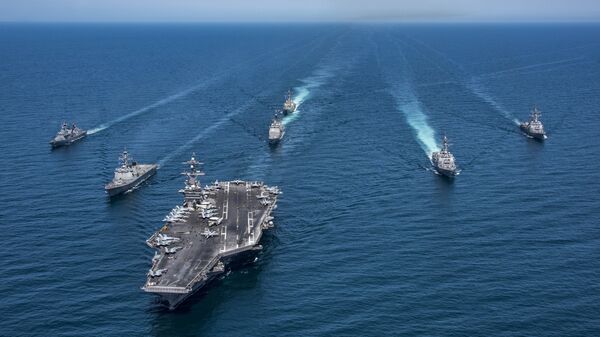During a recent conference of naval engineers, the head of Naval Sea Systems Command, Vice Admiral Thomas Moore, said that new missile launchers may be added to the Arleigh Burkes, the US Navy's most powerful destroyer fleet, to keep up with Russia and China, which have been developing hypersonic weapons.
The Arleigh Burkes have vertical launch systems, which are advanced systems for firing missiles on naval platforms such as surface ships, as well as Aegis missile capabilities developed to provide missile defense against short- to intermediate-range ballistic missiles.
“Vertical launch system has been a real game changer for us. We can shoot any number of things out of those launchers,” Moore said, Defense News reported. “We’ll probably change those out and upgrade them for prompt strike weapons down the road.”
Prompt strike refers to a US military system that can deliver hypersonic weapons (which travel at speeds of Mach 5 or higher) anywhere in the globe within one hour. According to Thomas Callender, a retired submarine officer and analyst with the Heritage Foundation, hypersonic weapons will most likely be added to submarines first.
“They’re looking at putting hypersonics on submarines first because [of] where you can get access,” Callender said. “You can potentially then put them on surface ships as an added capability for them, but the submarines would be the priority for access and the ranges you can achieve.”
The US Navy and Army are also currently working to develop a booster for hypersonic missiles. According to Popular Mechanics, there are two types of hypersonic propulsion: boost glide and scramjets. A scramjet engine uses “air breathing” technology to create combustion needed for hypersonic travel, while boost glide weapons glide to targets after separation from the missile.
The Naval Sea Systems command is also considering installing a “scaled-back” version of the air and missile defense radar AN/SPY-6 on its ships. According to US defense contractor and industrial corporation Raytheon, the AN/SPY-6(V) is the “the Navy's next generation integrated air and missile defense radar.”
“Currently in production, and on track for the DDG-51 Flight III destroyer, SPY-6 provides the Navy with unmatched protection against air, surface, and ballistic missile threats,” Raytheon adds on its website.




